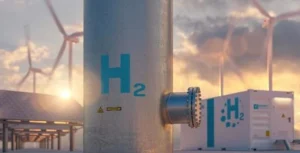As the world grapples with the urgent need to address climate change, hydrogen is emerging as a pivotal element in achieving net-zero carbon targets. This clean energy carrier is garnering global attention as countries and corporations invest in hydrogen-based technologies to reduce greenhouse gas emissions. However, while the promise of hydrogen is vast, significant challenges must be overcome to harness its potential fully.

Global Momentum Towards Hydrogen
Hydrogen is being hailed as a game-changer in the global energy transition. Unlike fossil fuels, hydrogen produces no carbon emissions when used as fuel, making it a key candidate for decarbonizing sectors that are challenging to electrify, such as heavy industry, shipping, and aviation.
Several countries have launched ambitious hydrogen strategies. The European Union has committed to becoming a global leader in renewable hydrogen, aiming to install 40 gigawatts of electrolyzers by 2030. Japan, which has been at the forefront of hydrogen technology, continues to push forward with projects like the Fukushima Hydrogen Energy Research Field, one of the world’s largest hydrogen production facilities.
In the United States, the Biden administration has announced significant investments in clean hydrogen through the Department of Energy’s Hydrogen Shot initiative, which aims to reduce the cost of clean hydrogen by 80% to $1 per kilogram within a decade. Additionally, China, the world’s largest emitter of carbon dioxide, has begun to explore hydrogen as part of its efforts to peak emissions before 2030 and achieve carbon neutrality by 2060.
Key Projects and Developments

Globally, numerous projects are advancing the hydrogen agenda:
1. **HyNet North West (UK):** This project is part of the UK’s efforts to establish a low-carbon industrial cluster by 2030. HyNet plans to produce low-carbon hydrogen at scale, capturing and storing the carbon emissions produced during hydrogen production.
2. **Hydrogen Energy Supply Chain (HESC) (Australia-Japan):** This project is pioneering the export of liquefied hydrogen from Australia to Japan, utilizing brown coal with carbon capture and storage (CCS) to produce hydrogen, a significant step towards establishing a global hydrogen supply chain.
3. **NEOM (Saudi Arabia):** Saudi Arabia is investing $5 billion in a green hydrogen-based ammonia production facility in NEOM, powered entirely by renewable energy. This facility is expected to be one of the world’s largest green hydrogen projects.
4. **Port of Rotterdam (Netherlands):** The port is developing a major hydrogen hub with plans to import and distribute hydrogen throughout Europe, reinforcing the region’s transition to a hydrogen economy.
Challenges on the Horizon
Despite the promising developments, several challenges remain. The current cost of producing green hydrogen, which is generated using renewable energy sources, is significantly higher than that of hydrogen produced from fossil fuels (grey hydrogen). This cost disparity is a major hurdle to widespread adoption.
Infrastructure development is another critical challenge. The storage, transportation, and distribution of hydrogen require substantial investments in new infrastructure, including pipelines and refuelling stations. Additionally, the scaling up of hydrogen production must be carefully managed to ensure it is economically viable and environmentally sustainable.
There are also technical challenges related to the efficiency and durability of electrolyzers, which produce hydrogen from water. Current technology must be improved to handle large-scale production and reduce energy losses during conversion.
Opportunities for Growth
Despite these challenges, the opportunities are significant. As the cost of renewable energy continues to fall, the production of green hydrogen is expected to become more competitive. Moreover, the global push for decarbonization will likely drive further investment and innovation in hydrogen technologies.
The development of hydrogen economies could also create new industries and jobs, particularly in regions currently dependent on fossil fuels. For example, hydrogen production and export could become a new economic driver for countries with abundant renewable energy resources.
Finally, international collaboration will be crucial in building a global hydrogen market. Standardizing regulations and developing cross-border infrastructure will enable the large-scale deployment of hydrogen technologies.
Way Forward
Hydrogen holds immense potential to help the world achieve net-zero carbon targets. While the journey ahead is fraught with challenges, the ongoing global efforts and investments in hydrogen technology pave the way for a cleaner, more sustainable future. The next decade will determine whether hydrogen can live up to its promise and become a cornerstone of the global energy transition.
Author: Vivek Prakash, PhD, PDF, SMIEEE
